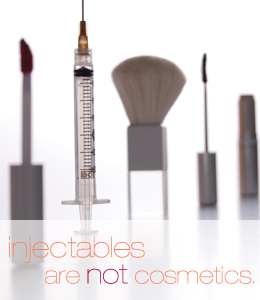The Hidden Dangers of Beauty
/ Normally, I barely listen to the radio when driving in my car, but today on the John Tesh Radio Show (Sunday) my ears perked up when he started to discuss the hidden "dangers" of young girls using makeup too early. Dangers in makeup? Really?
Normally, I barely listen to the radio when driving in my car, but today on the John Tesh Radio Show (Sunday) my ears perked up when he started to discuss the hidden "dangers" of young girls using makeup too early. Dangers in makeup? Really?
The broadcast was entitled "The Ugly Truth About Young Girls Wearing Makeup". The line that grabbed my attention was "the sooner your daughter starts wearing makeup, the sooner it might kill her!" This was a quote coming from Stacy Malkan, a cosmetic expert who wrote the book Not Just A Pretty Face: The Ugly Side of the Beauty Industry. According to the John Tesh website, Malkan states "by the time most North American girls become teenagers, many have a daily make-up ritual that includes lipstick, mascara, eyeliner, nail polish and perfume, not to mention skin lotion, shampoo, conditioner, and hair color treatments." She goes on to say "in fact, experts estimate that a typical young girl now walks around with at least a dozen layers of beauty products on her body! As the makeup layers add up, so does her exposure to dangerous chemicals, and that’s very bad news for a young girl’s health."
Apparently the culprits are chronic exposure to parabens and phthalates which have been found to disrupt hormone levels during adolescent years which may result in early puberty. Malkin continues to state "one study found that HALF [sic] of all North American girls now begin to show signs of breast development by the age of 10 – which is more than two years sooner than females from our grandmother’s generation. Other studies link those unusual hormone levels to a higher depression rate among young girls, and a higher risk for breast cancer! That’s why experts recommend women of all ages find out exactly what chemicals go into their makeup."
There is a website suggested for reference to verify the ingredients in certain beauty products and cosmetics and it is called the Skin Deep Cosmetic Safety Database. I was instantly intrigued and raced to my Mac when I got home to give it a try! Here's how my products scored:
(Scale: 0-2=Low hazard; 3-6 Moderate Hazard; 7-10 High Hazard).
- Cleanser: 3 (moderate hazard)
- Toner: 7 (high hazard)
- Moisturizer: 5 (moderate hazard)
- Eye Cream: 6 (moderate hazard)
- Lip Cream: 7 (high hazard)
- SPF 30: 7 (high hazard)
- Concealer: 4 (moderate hazard)
- Foundation Primer: 5 (moderate hazard)
- Foundation: 9 (high hazard)
- Loose Powder: 5 (moderate hazard)
- Blush: 7 (high hazard)
- Bronzing Powder: 8 (high hazard)
- Eyeshadow: 7 (high hazard)
- Mascara: 8 (high hazard)
- Lipstick 6: (moderate hazard)
My gosh, I'm a walking carcinogen!!! Like most women, I use an array of products, from medical grade like Obagi, spa grade like SkinCeuticals, high end department stores like Merle Norman, Estee' Lauder and Laura Mercier, right down to drug store brands like Maybelline. It seems no company's products were completely safe. And, makeup is just the beginning for young girls!
More and more young girls are taking their skin care regimens to the next level by having microdermabrasion treatments and chemical peels, with some escalating to laser and injectable therapies. Putting aside the various protocols for acneic adolescents, there has actually been a rise in the U.S. of young girls undergoing laser hair removal, photo facials, dermal filler procedures, even laser lipolysis. Where do we draw the line as clinicians? 21? 18? 16 with parental consent? I know in our medical spa we have been approached by parents inquiring as to what our policy is for treating adolescents for non-medical related conditions. The number one request is laser hair removal for ethic skin types predominately for excess facial hair. Many clinicians feel it is a low-risk procedure which can lift a child's self-esteem. Some clinicians disagree and feel a child is much too young to be exposed to laser therapies.
I'm not a laser expert and am uncertain as to if many aesthetic equipment manufacturers have performed clinical trials on adolescents for laser procedures (other than port wine stains). I'm more apt to believe the answer to this questions will become clearer as the years go on and by remembering the first rule is to "do no harm".
That, and to throw away your teenager's makeup!
Author: Paula D. Young RN runs internal operations and training at Young Medical Spa and is the author of the Medical Spa Aesthetics Course, Study Guide, and Advanced IPL & Laser Training course for medical estheticians and laser technicians.
Submit a guest post and be heard.






